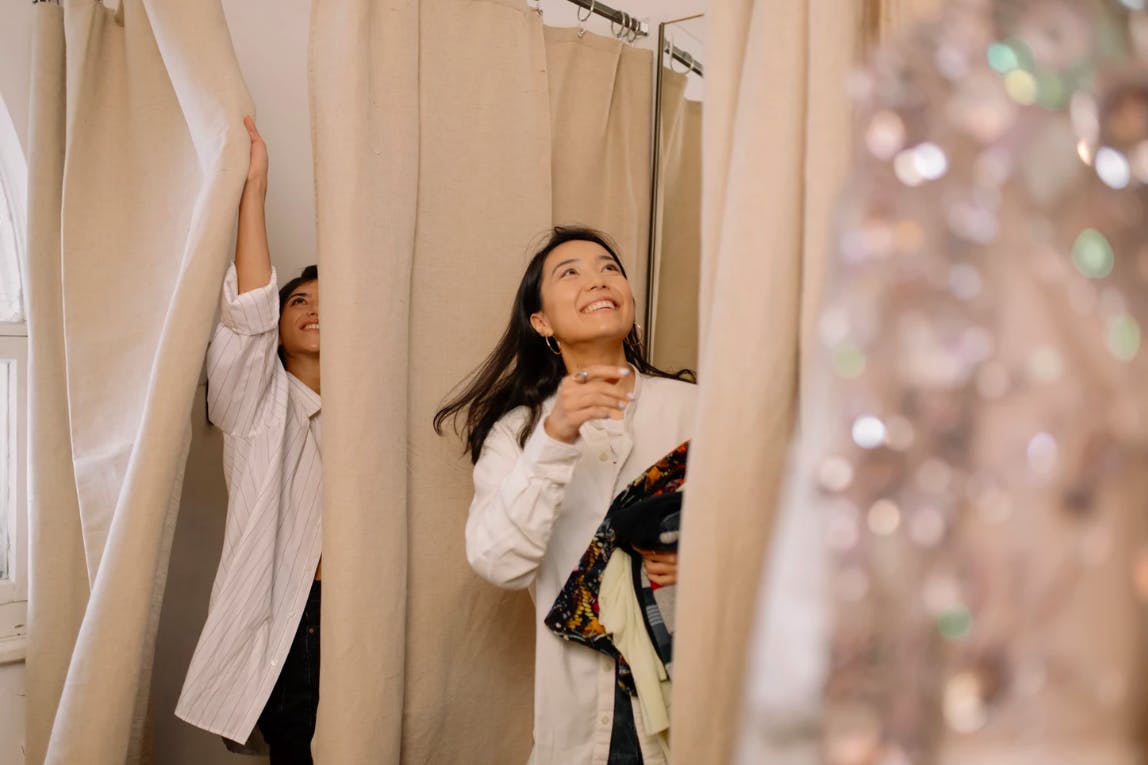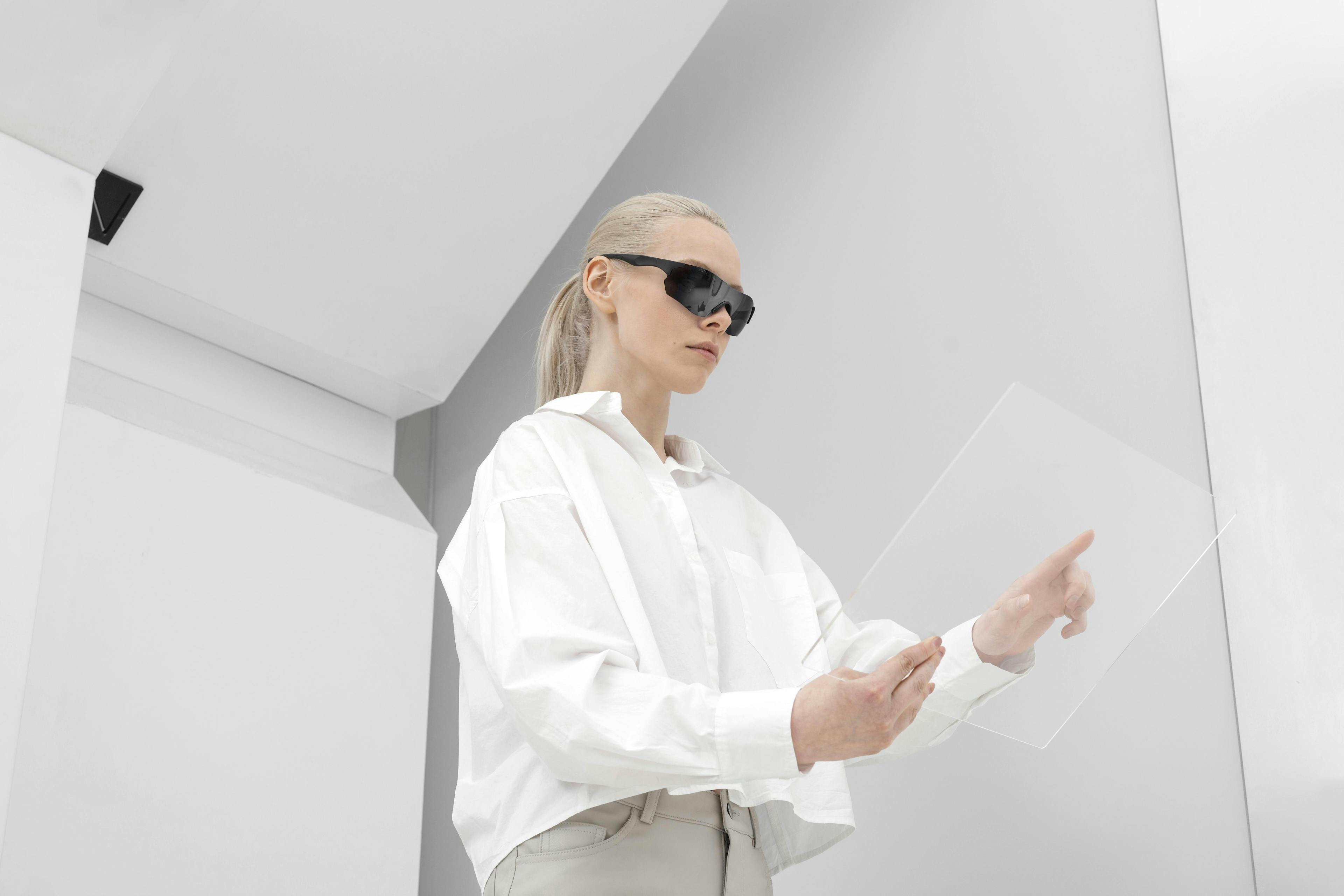
The best virtual try-on technologies for fashion e-commerce
In 2022, American retail giant Walmart announced they bought start-up Zeekit, a specialist in virtual try-on technologies. This comes as a great news in the retail ecosystem, comforting Walmart's ambitions to reinforce its presence in fashion.
Virtual Try-On, or how to virtually try on clothes online
The virtual dressing room
When shopping for clothes online, the main trigger of hesitation is of course the lack of options to try the garments on. According to a customer survey conducted by Veesual in 2021, "I am not sure that the garment will look good on myself" is the main reason quoted by users to justify why they dropped before conversion on product pages.
Virtual Try-On modules aim to reduce this hesitation by bringing the online customer experience closer to in-store shopping. There exists several types of virtual try-on technologies, but most follow the same principles.
How to try fashion online?
To replace the familiar stop in the fitting room, it is necessary to recreate an experience that will show customers how the garment will look like when worn. To serve this purpose, virtual try-on solutions often combine several types of advanced technologies in order to simulate worn garments with photorealistic results.
The visualisation is done either on a picture of the customer themselves (they upload their own picture), or on a virtual avatar (the client determines the characteristics of their "virtual twin" by selecting their measurements, skin color...), or on a model picture (the client chooses among a list of models the one that looks most like them).
Seeing clothing on a model that looks like me, an innovative experience
When we asked online shoppers what innovative customer experience they were most interested in, they were most enthusiastic about the possibility to visualise garments on a model that looks like them, listing this option before the possibility to see the garments on their own picture.
Indeed, this type of virtual try-on experience offers several advantages:
- It allows for a smooth customer journey: the try-on visualisation is available within a few clicks, without interrupting the purchase funnel.
- It avoids all potential questions or issues linked to personal data security, as the customer doesn't share any personal picture or biometric data.
- Finally, it guarantees a perfect quality of the image (in terms of contrast, lighting...) regardless of the photographic talents of the customers!
For instance in 2020, British fashion e-commerce website ASOS implemented a solution called "See My Fit" using Zeekit technology to allow customers to visualise dresses on 16 different models with sizes ranging from 4 to 16.
Virtual Try-On, a golden opportunity for fashion e-commerce
Virtual Try-On for clothes : a solution to increase conversion online
An academic survey conducted by a team of specialists of diversity in fashion has shown that the intention of purchase increases by over 200% when clients see fashion products worn by models that look like them.
These results come as no surprise: when they are able to visualise the garments on an image that they identify with, customers feel more confident about what the product will look like when they wear it. They are better able to project and buy more confidently.
Implementing a virtual try-on module is a powerful tool to increase conversion on fashion e-commerce websites.
Virtual Try-On to reduce e-commerce return rate
Thanks to the virtual dressing-room, customers are able to visualise how garments look like on a model that looks like them. They are therefore less likely to make error purchases, be it in terms of size, colour or garment shape.
Helping clients buy more confidently is also a great means to fight size sampling, which is a practice that consists in ordering the same article in several sizes in order to return the sizes that don't fit.
Virtual Try-On can therefore help fashion brands increase their margins by reducing the return rate on their e-commerce websites.
Virtual Try-On to improve cross-sell
Virtual dressing rooms also give customers the opportunity to try several garments at the same time in order to style a complete outfit.
In 2020 Tommy Hilfiger implemented a virtual try-on module on the homepage of all their websites internationally, allowing clients to style and try-on outfits with a "mix & match" approach.
By helping clients to project themselves with a complete outfit, the brand encouraged customers to purchase the whole style ("shop the look"), which is a great means to increase average order value.
Virtual Try-On can therefore be seen as a competent tool to generate cross-sell.
Different types of virtual try-on technologies
You are looking to implement a virtual try-on module on your e-commerce website? There exist several types of technologies available. Here is a summary:
Virtual try-on solutions using 3D
Some virtual try-on technologies use 3D models to render the garments on digital avatars.
For example, british company Metail starts from the 3D patterns used by fashion brand design teams to fabricate the products to recreate a 3D model of the garment which will then be adapted onto a 3D character thanks to physics simulation models.
This type of solution is very promising but requires for the brand to have access to 3D patterns of the products. This type of 3D assets are becoming more common in certain large corporations but remain rather costly to develop.
Virtual Try-On with augmented reality
Several luxury brands recently unveiled gamified applications using augmented reality (AR) to allow users to virtually try on fashion products.
For instance Gucci implemented in its mobile application a module that allowed users to virtually "try on" sneakers in real time.
Snapchat also recently unveiled a partnership with Farfetch allowing users to add a selection of jackets from the brand Off White to their videos.
These applications using AR filters are very interesting especially for marketing campaigns. But despite the very interesting virality potential of a gamified try-on experience, this technology still raises questions in terms of quality and realism of the rendering of clothing.
Virtual Try-On with generative AI
A new field within deep learning was opened a few years ago, which allows algorithms to instantly recreate images pixel per pixel with photorealistic results: generative AI.
This groundbreaking technology has several applications. It is especially interesting for virtual try-on solutions as it can instantly create hundreds (or thousands) of images combining the garments of an entire fashion collection, worn by a number of different models.
At Veesual, we have trained our algorithms on several millions of pairs of garment packshot images and on-model images. Our models are therefore able to realistically predict what a garment will look like on any model.
Thanks to this technology, our e-commerce plugin Model Try On can create a virtual try-on experience starting only from the brand's existing images, without the need to implement complex 3D scanning processes or garment 3D modelling.
RESOURCES
Discover our new article

"Complete the Look" Banners : is it enough ?
Scroll through any product page on a fashion eCommerce site and chances are you’ll see it: a “Wear it With” or “How to Style It” section, usually nestled just beneath the product. These are variations of what many fashion brands refer to as “Complete the Look” banners—a quick way to suggest complementary items that finish an outfit.

Has Online Shopping Lost Its Spark?
For years, e-commerce has delivered on convenience, speed, and scale. But something essential may have been lost along the way: the joy of shopping.

5 Ways Virtual Fitting Can Elevate Your Fashion Brand’s Online Presence
Virtual fitting has become a must-have in fashion e-commerce. Just like everything in fashion, ignoring the trend means falling behind. Virtual Fitting is more than a nice-to-have, it boosts your online shopping experience while making it more accessible and engaging for everyone.
